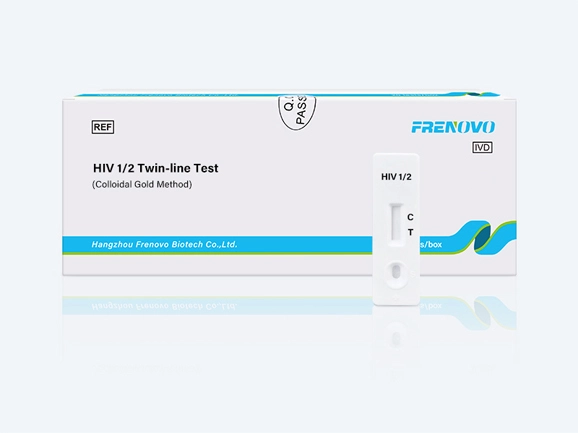

The human immunodeficiency virus (HIV) is a retrovirus that infects cells of the immune system, destroying or impairing their function. As the infection progresses, the immune system becomes weaker, and the person becomes more susceptible to infections. The most advanced stage of HIV infection is acquired immunodeficiency syndrome (AIDS). It can take 10-15 years for an HIV-infected person to develop AIDS. The general method of detecting infection with HIV is to observe the presence of antibodies to the virus by an EIA method followed by confirmation with Western Blot. One step HIV Ab Test is a simple, visual qualitative test that detects antibodies in human Whole Blood/serum/plasma. The test is based on immunochromatography and can give a result within 15 minutes.
The One Step HIV AbTest is a qualitative membrane strip based immunoassay for the detection of HIV antibodies in Whole Blood /Serum / Plasma. In this test procedure, recombinant HIV antigen is immobilized in the test line region of the device. After a Whole Blood /Serum / Plasma specimen is placed in the specimen well, it reacts with HIV antigen coated particles that have been applied to the specimen pad. This mixture migrates chromatographically along the length of the test strip and interacts with the immobilized HIV antigen. If the specimen contains HIV antibodies, a colored line will appear in the test line region indicating a positive result. If the specimen does not contain HIV antibodies, a colored line will not appear in this region indicating a negative result. To serve as a procedural control, a colored line will always appear at the control line region indicating that proper volume of specimen has been added and membrane wicking has occurred.
Assay for the Confirmation and Differentiation of Individual Antibodies to HIV-1 and HIV-2 in Whole Blood, Serum, or Plasma Specimens.
Fingerstick Whole Blood Clean the finger of the person being tested with an antiseptic wipe. Allow the finger to dry thoroughly, or wipe dry with a sterile gauze pad. Using a sterile lancet, puncture the skin just off the center of the finger and wipe away the first drop with sterile gauze. Avoid squeezing the fingertip to accelerate bleeding as this may dilute the blood with excess tissue fluid. Collect 15µL of the sample from the second drop, touching the disposable Microtube pipette provided to the drop of blood until the pipette is full.




